Popularity didn’t used to be quantifiable.

“How did people even measure popularity before social media?” I asked idly while a friend was cropping a selfie for Instagram. “They didn’t,” she replied. As she refreshed the app to watch the first wave of “likes” roll in, I felt a stab of nostalgia. Remember when popularity wasn’t quantifiable? Remember when “trends” were subjective, before there were algorithms to calculate them by analyzing words typed into search engines and shared Facebook posts? I miss the days when the most stressful thing about popularity was the sheer uncertainty of the whole enterprise. Back when popularity was cool and aloof, identifiable only by the feelings of desire, envy, and yearning experienced by those who looked upon it.
Today, there is no mystery. The metrics of popularity are pervasive and unavoidable. News stories, video clips, music play lists— everything comes with view counts, share counts, and crowd-sourced ratings. If you look up an address on Google, you see a rating of the location. (My subway stop has 3.9 stars.) If you order dinner on Seamless, you’ll see tabulations of popularity and quality. (If a two star sushi spot has been rated a thousand times and is still in business, it can’t be that bad, right?) If you add a new contact to your phone, Facebook will announce how much social overlap you have. Some messaging apps even force you to confront the mechanics of popularity head-on—Snapchat compares how much you message your friends versus how much they message you, and assigns heart and side-eye emoji to your contact list accordingly.
Diese Geschichte stammt aus der May 1–14, 2017-Ausgabe von New York magazine.
Starten Sie Ihre 7-tägige kostenlose Testversion von Magzter GOLD, um auf Tausende kuratierte Premium-Storys sowie über 8.000 Zeitschriften und Zeitungen zuzugreifen.
Bereits Abonnent ? Anmelden
Diese Geschichte stammt aus der May 1–14, 2017-Ausgabe von New York magazine.
Starten Sie Ihre 7-tägige kostenlose Testversion von Magzter GOLD, um auf Tausende kuratierte Premium-Storys sowie über 8.000 Zeitschriften und Zeitungen zuzugreifen.
Bereits Abonnent? Anmelden
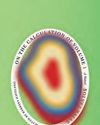
Trapped in Time
A woman relives the same day in a stunning Danish novel.

Polyphonic City
A SOFT, SHIMMERING beauty permeates the images of Mumbai that open Payal Kapadia's All We Imagine As Light. For all the nighttime bustle on display-the heave of people, the constant activity and chaos-Kapadia shoots with a flair for the illusory.

Lear at the Fountain of Youth
Kenneth Branagh's production is nipped, tucked, and facile.

A Belfast Lad Goes Home
After playing some iconic Americans, Anthony Boyle is a beloved IRA commander in a riveting new series about the Troubles.
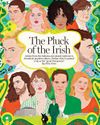
The Pluck of the Irish
Artists from the Indiana-size island continue to dominate popular culture. Online, they've gained a rep as the \"good Europeans.\"
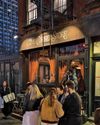
Houston's on Houston
The Corner Store is like an upscale chain for downtown scene-chasers.

A Brownstone That's Pink Inside
Artist Vivian Reiss's Murray Hill house of whimsy.

These Jeans Made Me Gay
The Citizens of Humanity Horseshoe pants complete my queer style.
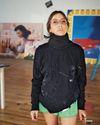
Manic, STONED, Throttle, No Brakes
Less than six months after her Gagosian sölu show, the artist JAMIAN JULIANO-VILLAND lost her gallery and all her money and was preparing for an exhibition with two the biggest living American artists.
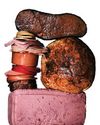
WHO EVER THOUGHT THAT BRIGHT PINK MEAT THAT LASTS FOR WEEKS WAS A GOOD IDEA?
Deli Meat Is Rotten